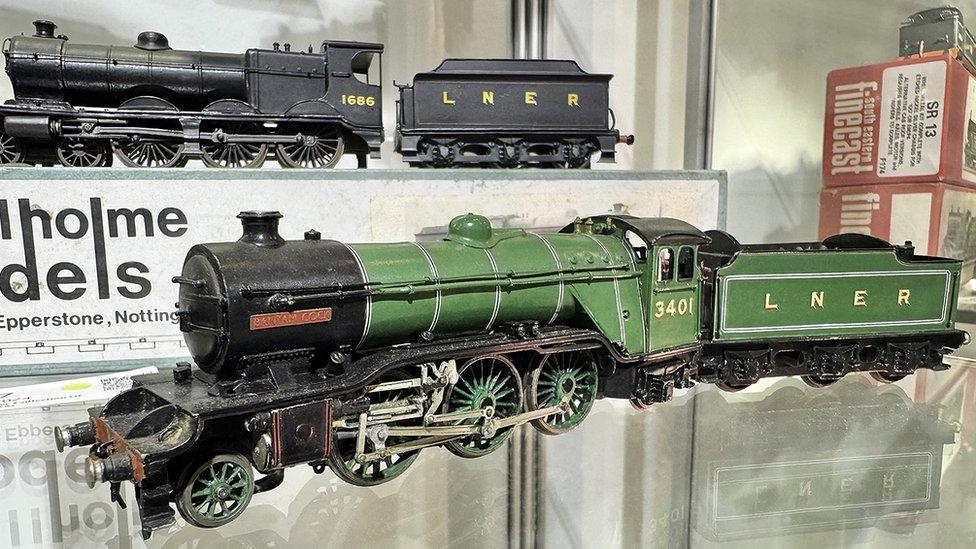Scan reveals inner workings of oldest model loco

The once fully working locomotive replica was used to woo potential investors
- Published
A 3D scan of the world's oldest model locomotive has revealed its hidden inner workings for the first time in more than 200 years.
Using a CT X-Ray, experts have been able to get a glimpse of the impressive engineering design of the mini prototype of a pioneering early steam locomotive.
The images show how the once working model replicated the revolutionary mechanics of its full-sized counterparts, which revolutionised the railway industry.
John McGoldrick, Leeds Museums and Galleries’ curator of industrial history, said "short of cutting it open" experts would have never got to examine its inner workings in such a way.
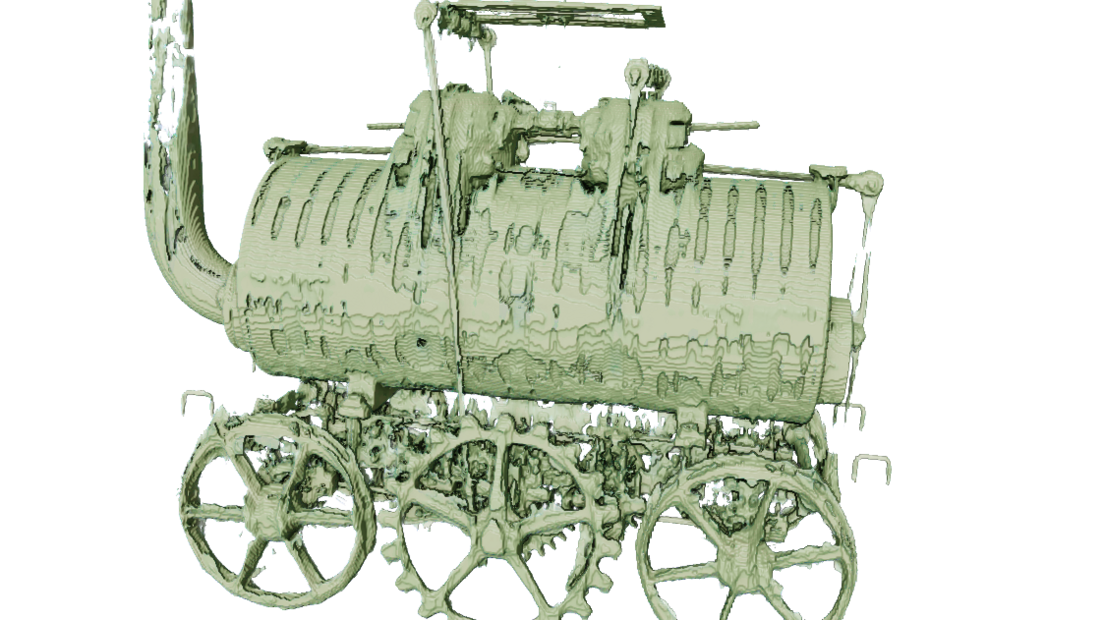
The scan shows the intricacy which went into its creation
The model was made for the engineer Matthew Murray in 1811 and used as a sales tool to demonstrate the viability of the design to potential investors.
His efforts were successful, with each full-sized engine selling for £350.
Full-sized Murray designs, such as the famous Salamanca, became the very first commercially viable steam locomotives.
They revolutionised the transportation of coal in Leeds, enabling a small and relatively lightweight engine to haul more than 20 times its own weight, powered by steam from a cast iron boiler with a single flue.
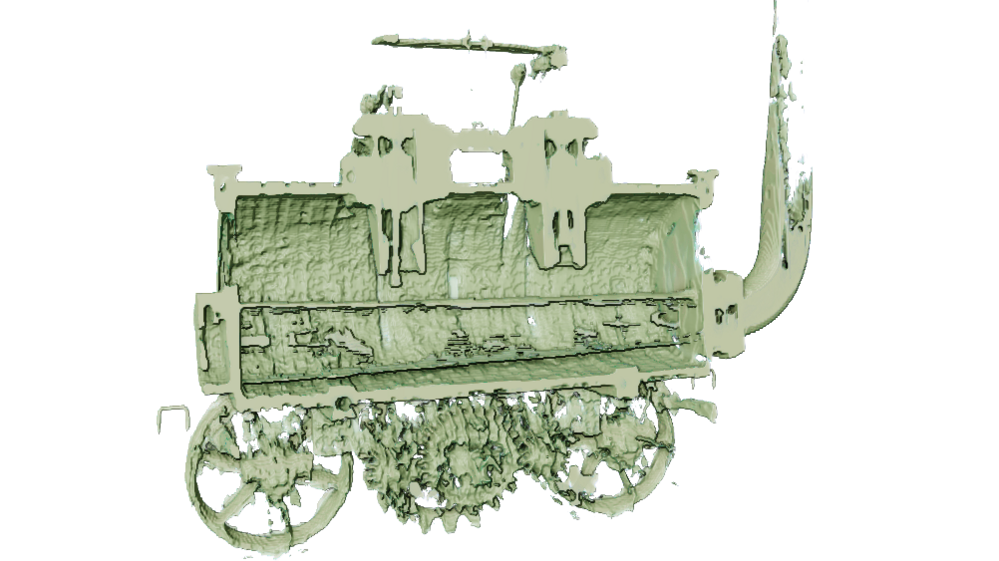
The images are set to feature in a future exhibition at the Leeds Industrial Museum
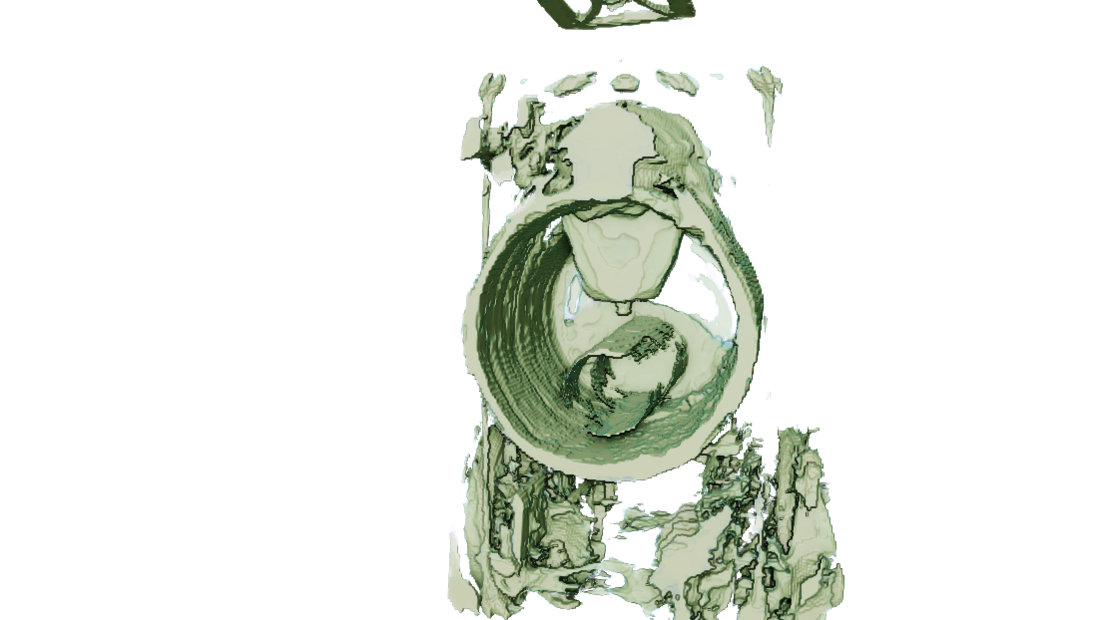
The images will give visitors a better insight into its workings
In order to gain a greater understanding of Murray's designs, museum staff worked with a railway historian and experts from the University of Leeds in order to carry out a technical and mechanical survey of the model.
Before the scan, experts had relied on written designs and sketches to get an understanding of its intricate make-up.
Although scanning metal objects can create distortions in the resulting images, Mr McGoldrick said they were able to see the locomotive's main structures including the pestons, flue and boiler.
"It's a strange scene to see this little model going on a CT scanner - the kind of thing used for human bodies - but it's a great way of seeing right through the locomotive from a number of different angles so we can understand properly how it was constructed.
"We're able to see how this was a viable working model. It wasn't just a toy for kind of sitting there looking pretty on a mantle piece."
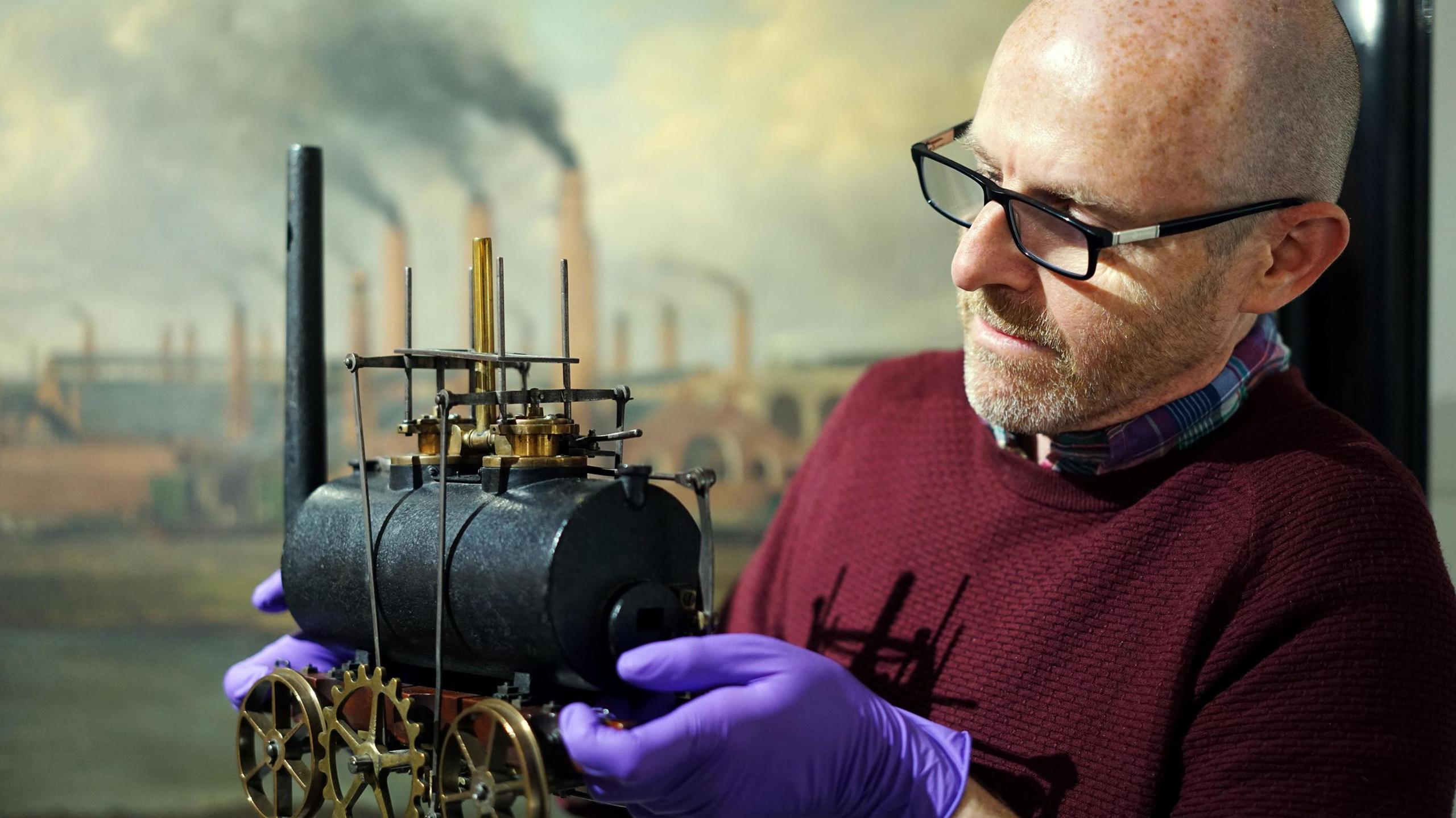
John McGoldrick said the model was very important because the full-size locomotives were no longer in existence
A detailed historical account of the model together with an assessment of its design and components will now be produced and feature in a future exhibit at Leeds Industrial Museum.
Councillor Salma Arif, executive member for adult social care, active lifestyles and culture, said: “The status Leeds has as a centre for engineering excellence over the centuries is incredible, and this extraordinary model really encapsulates that spirit invention and ingenuity."
Listen to highlights from West Yorkshire on BBC Sounds, catch up with the latest episode of Look North or tell us a story you think we should be covering here, external.
Related topics
Related internet stories
- Published14 April 2024
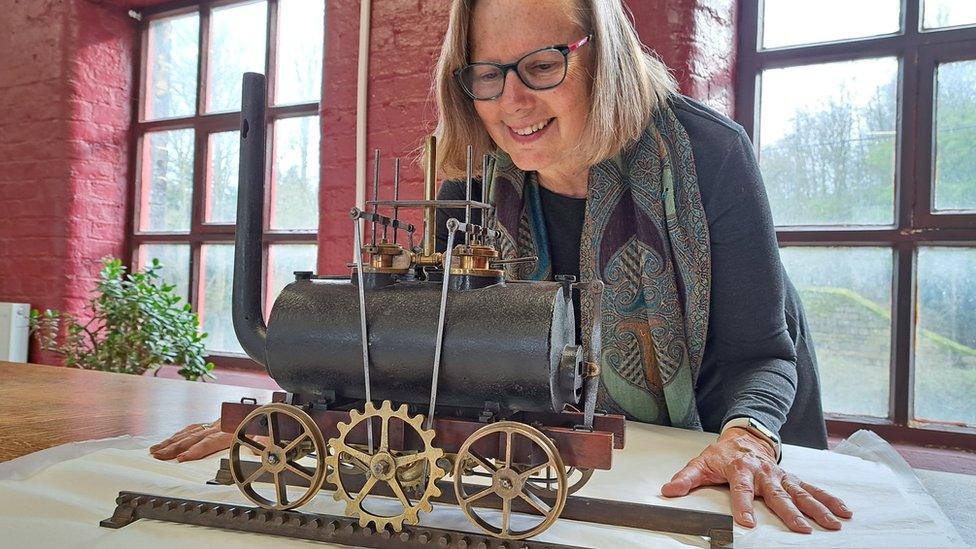
- Published23 March 2024
